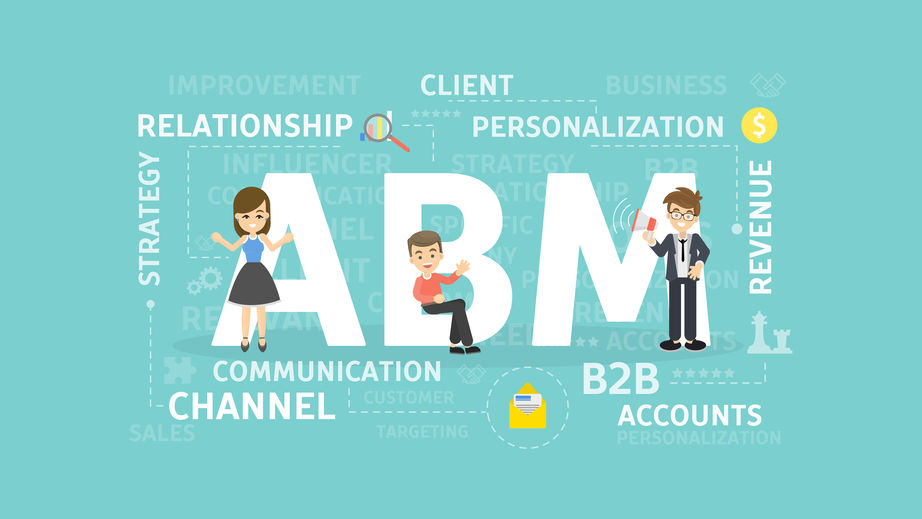In the past few years, the focus of digital marketing has largely shifted to social media. However, all you need is a look in your inbox to know that brands still use email marketing. But, it appears they use it almost as an afterthought.
There is little sophistication to what they wish to convey and often those emails are just copied from their social media posts (and even worse at times, are just a link to those posts).
Emails are how most of us became acquainted with the internet, at least the pre-millennial generation. Most had an AOL or Yahoo account and many businesses recognized right away that it is an excellent tool to reach out to their customers.
But over the years it fell by the wayside and most business owners respond with a blank look when asked about their e-campaign. It is something that the minions of the digital marketing team attend to and never comes up as part of a serious strategy meeting.
It doesn’t need to be so, and that is what we are going to explore in this guide. No matter if you are a novice to email marketing or looking to give a shot in the arm to your existing email marketing campaign.
Develop a strong bond with your community of customers with the help of email and grow your top line in the process. Email marketing provides a huge 4400% return on your investment. (1)
What is Email Marketing?
 Email marketing is part of the broader digital marketing strategy which has always proven to be useful when applied suitably.
Email marketing is part of the broader digital marketing strategy which has always proven to be useful when applied suitably.
It consists of sending emails to your customers, both existing and prospective, with customized messages for lead generation campaign. Bulk emailing has existed for about two decades, and it can develop a connection with a prospect and convert them into paying customers quite successfully.
The USP of email marketing is that it is targeted and allows you to send catalogs, brochures, offers, discounts, information about new product launch and other varieties of promotional documents that allow a customer to learn more about your business, products, and the set of values which the organization adheres to.
The usual goals of an email marketing campaign are:
Build relationships with your customers by providing them in-depth information about your business
To reactivate interaction with customers who have been dormant
Segmentation and targeted messaging of customers
What Advantages Does Email Marketing Have Over Social Media
This is a very valid question since marketing budgets are finite and social media will always be the core focus of any digital marketing team.
But the platforms that you use have access to your entire content. There is nothing to prevent them from using that information for their own gains; such as if you own a sandwich shop in Brooklyn the platform can show advertisements of your rival sandwich shop to those who have subscribed to your business page.
In short, you do not have any control or privacy on social media, nor can you communicate one on one with any customer unless they initiate a conversation through chat.
10 Steps of Email Marketing
1. Create an email list
 Before you can start sending emails you must have a list of email addresses. Do not buy an email list. It is tempting to take this shortcut but it never works out. Email lists for sale include old and inactive email addresses of people you know nothing about. What use does someone in Dallas, or Delhi have for an email about a sandwich shop in Brooklyn?
Before you can start sending emails you must have a list of email addresses. Do not buy an email list. It is tempting to take this shortcut but it never works out. Email lists for sale include old and inactive email addresses of people you know nothing about. What use does someone in Dallas, or Delhi have for an email about a sandwich shop in Brooklyn?
It would take only one person to click on SPAM to alert the email service that your domain sends out spam mail, and that tarnishes your image. The only people who should receive your emails are those who want to receive it.
Create a mailing list through a registration box on your website using a plugin. You can encourage people to register in many ways with the most usual ones being an offer or discount that can be obtained by providing an email address. In some businesses, it is possible to provide a free PDF e-book that the customer wants to read.
Sign up forms may be static and located on your homepage, contact page or sidebar. They may be part of a pop-up that appears for about 15 seconds after a visitor has spent a bit of time on your site (no need to greet them with a registration form shoved in their face).
2. Make an offer
To get you would have to give. After all a customer has to spend some time to read your mail. In return, what are you going to reward them with? There has to be some type of incentive that you have to devise depending on your business.
It can be an early bird prize or a limited period offer. In short, the customer must know that most of your emails (barring those announcing new products and periodic newsletters) will give something away. That is the only way you are going to entice them to read an email.
This is known as a lead magnet and has immense importance. Ebooks, videos, infographics, and discounts are a few of the most used lead magnets.
Don’t make the mistake of offering something of low quality to extract the email address. Understand that you are dealing with a prospective client and cannot afford to be seen as a fraud.
3. Personalize content
 Addressing the customer by their first name (e.g. Hi John) is great. But what about the rest of the mail? There has to be an honest attempt to avoid fake familiarity and show the first time customer that you care and are reaching out. The best way to do this is to create content that caters to their taste and needs.
Addressing the customer by their first name (e.g. Hi John) is great. But what about the rest of the mail? There has to be an honest attempt to avoid fake familiarity and show the first time customer that you care and are reaching out. The best way to do this is to create content that caters to their taste and needs.
It is not at all hard to create emails that are to a certain degree customized. Zoho Campaigns and Bitrix24 are examples of software that allow you to lend a touch of personalization and bring about demand generation.
4. Pay attention to the subject line
Unfortunately, this aspect is quite often overlooked in email marketing. The subject line has to be well composed so that the email stands out from the others in the inbox. It is similar to the title of a webpage and unless it grabs attention no one is going to click.
While there is no assurance that your email will be read, there is near 100% likelihood that it will be seen. With captivating subject lines, there is a greater chance that the mail will not only be seen but opened and read.
5. Use a clean and professional format
Use a minimalist approach when writing an email for soliciting B2B sales leads. Do not overuse a variety of fonts which would give the reader a headache. Sloppy formatting will lead to disaster. Use a professional writer to create temples or use one from MailChimp.
It is also important to make sure that the preview text is enticing. Make sure to add the signature of the person sending it whether it is the owner or someone acting on his behalf (usually from the sales department).
6. Include a CTA
 Not only must the content be attractive, but it must conclude with a CTA that is effective and bold for optimal lead generation. You can choose to repeat the CTA but try not to include it more than three times. To convert leads make the CTA relevant and actionable.
Not only must the content be attractive, but it must conclude with a CTA that is effective and bold for optimal lead generation. You can choose to repeat the CTA but try not to include it more than three times. To convert leads make the CTA relevant and actionable.
Imaginative use of language leading to the CTA is of utmost importance. Do not add the CTA as an afterthought but make it compelling and catchy.
7. Don’t confuse the reader with too many offers
Don’t plaster the email with several offers. You have to remember that most people will read the email on a mobile device with a screen no more than a few inches wide. Too many offers or too much information leading to an offer can cause overload. Never forget the reader has other things to do and try and convey briefly your offer. Instead of stacking your offers together stagger them if possible.
8. Send out a regular newsletter
Email marketing is never complete without a weekly/monthly newsletter. Include inside it important facts about your industry or domain. Give away free tips and try to improve the reader’s knowledge in some way.
What does it achieve? First of all, it establishes you as a domain expert. The reader will look to you for new information about the industry. Not only that, but an informative newsletter imprints your brand on the consumer’s mind. They are not likely to forget it and that is an invaluable asset.
9. Research about the best time to send an email
Ignore research about this topic for a while and do your own research. Conventional wisdom says to send it early in the day when people have opened the inbox after arriving at their office. But this is by no means perfect.
Most people have a different work email and personal email address and you probably have the latter in your possession. Also, many might not at all open marketing emails during work hours.
10. Create synergy between email and social media
 In your emails be sure to include the links to your social media accounts. Vice-versa also holds. It is possible to do growth hacking in this way and make them benefit off each other.
In your emails be sure to include the links to your social media accounts. Vice-versa also holds. It is possible to do growth hacking in this way and make them benefit off each other.
Take advantage of every trick in the book to make email recipients visit your social sites and participate in the online community your profiles have aggregated.
—
Review The Email Marketing Process as Far as Possible
You have to maintain a careful watch over the email marketing campaign and review its performance. Thankfully it is not too hard to do given the vast number of tools available.
Opens
These metric tells you how many have actually opened your email and when. It offers valuable insights about the best time to send emails and if your subject lines are catchy enough.
To have a greater chance of opens, you must, first of all, communicate clearly during registration what type of emails you will be sending – whether they will be promotional, product launches, newsletters, surveys, etc. It is also possible to specify it again in the welcome mail.
Click-through rate
CTR shows how many who opened the email also clicked the link containing the offer, etc. If a reader finds the content boring and/or irrelevant they will just send it to the trash can. With click-through, you have an idea about which type of topic and content finds the best response.
If a particular email does not receive satisfactory click-through consider removing underperforming content in favor of more engaging one. Similarly, if a link is well-received find some way to repeat it again in an upcoming email.
Manage unsubscribes
It is a serious disappointment to find someone has opted out of your mailing list. But don’t give up quickly. Have an exit questionnaire ready and ask them why they are leaving. The feedback is important for you to fine-tune your email marketing.
Traffic
Traffic reports will tell you what percent of your web traffic is coming from links in your emails. How do you ensure that there is a steady flow from the email? Include a clear CTA that is not ambiguous in any way but ask the customer to do something in no uncertain terms.
Also, find out if there are broken links in the email. Another important thing to keep in mind is that traffic is generated when you send emails consistently. Infrequent communication will cause the reader to disengage with your brand.
Vital Points
We have presented a brief guide that outlines what any successful email marketing should be like. There are tons of other aspects to look into such as sales generation, ROI, automation, and so on. The points mentioned above have to be implemented together and not in bits and pieces.
The important aspect is to realize that an email marketing campaign is an ideal way to get to know your customers better and to receive from them valuable feedback.
Never hesitate to ask your subscribers for their candid opinion. It is your goal to create fascinating content for subscribers and who except them can guide you perfectly on that path.



